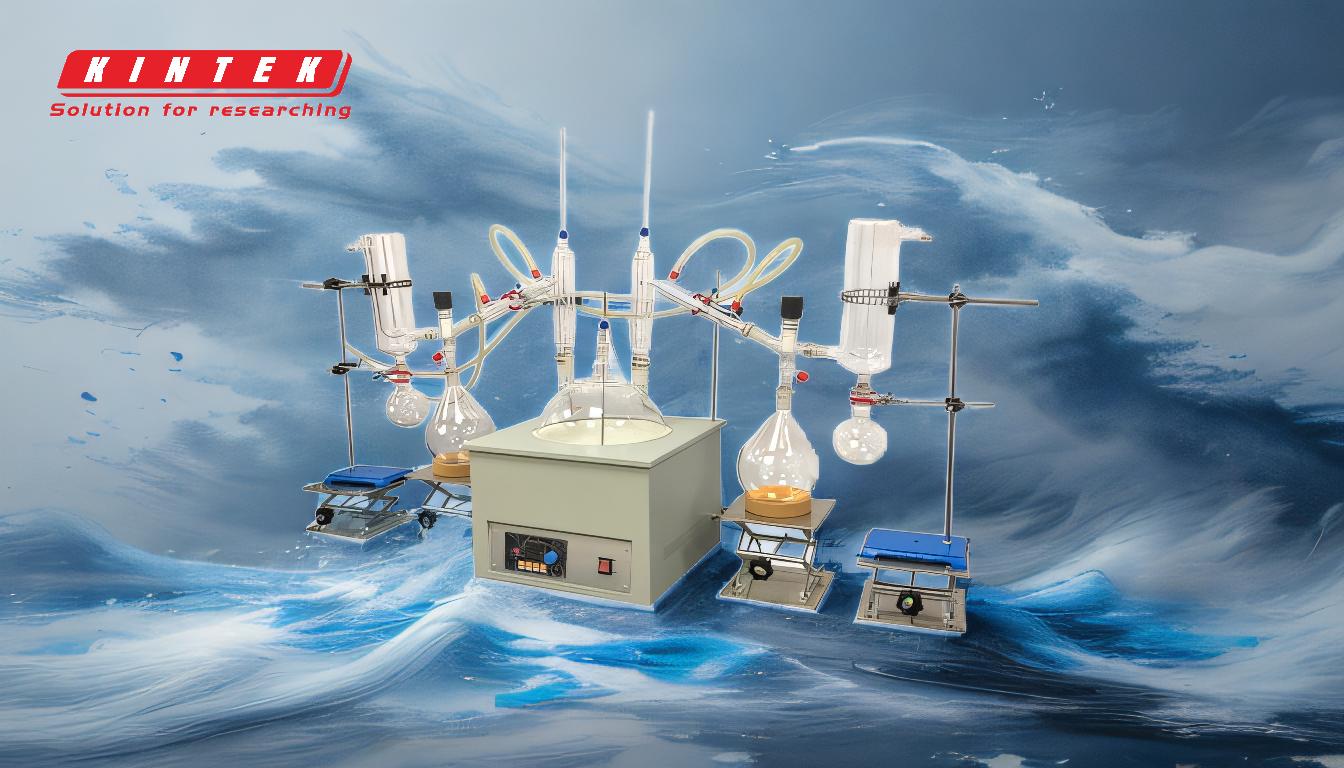Short-path distillation and simple distillation are not the same, although they share the common goal of separating and purifying substances. Short-path distillation is an advanced technique that improves upon the limitations of simple distillation. It operates under lower pressure, uses a vacuum pump to reduce boiling points, and requires less time and heat, making it more efficient and cost-effective. Additionally, it can handle a wider range of materials, avoids issues like bubbling and spillage, and achieves higher purity levels. While simple distillation is limited to specific materials and requires strict temperature control, short-path distillation offers greater flexibility, safety, and efficiency, making it suitable for both laboratory and industrial applications.
Key Points Explained:

-
Operational Differences:
- Simple Distillation: Requires strict control of the material's boiling point, making it suitable only for specific materials. It often involves bubbling and boiling, which can lead to spillage and health risks.
- Short-Path Distillation: Operates at multiple temperatures and lower pressures, reducing the risk of spillage and health hazards. It is more versatile and can handle a broader range of materials.
-
Pressure and Temperature:
- Simple Distillation: Operates at atmospheric pressure and higher temperatures, which can degrade heat-sensitive compounds.
- Short-Path Distillation: Uses a vacuum pump to lower atmospheric pressure, reducing boiling points and allowing for the distillation of heavier molecules at lower temperatures. This makes it ideal for heat-sensitive materials.
-
Equipment and Efficiency:
- Simple Distillation: Requires larger, more complex apparatuses and longer processing times. It is less efficient and more costly due to higher energy consumption.
- Short-Path Distillation: Utilizes compact, simpler equipment that occupies less space. It is faster, more efficient, and cost-effective, often achieving distillate purity levels of up to 99%.
-
Material Suitability:
- Simple Distillation: Limited to specific materials with well-defined boiling points.
- Short-Path Distillation: Suitable for a wider range of materials, including those with closer boiling points and heat-sensitive compounds.
-
Safety and Environmental Impact:
- Simple Distillation: Higher risk of spillage and exposure to hazardous materials due to bubbling and boiling.
- Short-Path Distillation: Safer for workers as it operates at lower pressures, reducing the risk of spillage and exposure. It also generates less waste and is more environmentally friendly.
-
Applications:
- Simple Distillation: Commonly used in basic laboratory setups and for straightforward separations.
- Short-Path Distillation: Ideal for advanced laboratory and industrial applications, particularly for purifying high-value or heat-sensitive compounds.
In summary, while both methods aim to separate and purify substances, short-path distillation offers significant advantages in terms of efficiency, safety, versatility, and cost-effectiveness, making it a superior choice for many applications.
Summary Table:
| Aspect | Simple Distillation | Short-Path Distillation |
|---|---|---|
| Pressure | Operates at atmospheric pressure | Uses a vacuum pump to lower pressure |
| Temperature | Higher temperatures, risk of degrading heat-sensitive compounds | Lower temperatures, ideal for heat-sensitive materials |
| Efficiency | Less efficient, longer processing times | Faster, more efficient, and cost-effective |
| Material Suitability | Limited to specific materials with well-defined boiling points | Suitable for a wider range of materials, including heat-sensitive compounds |
| Safety | Higher risk of spillage and exposure to hazardous materials | Safer, reduces spillage and exposure risks |
| Applications | Basic laboratory setups and straightforward separations | Advanced laboratory and industrial applications, ideal for high-value or heat-sensitive compounds |
Ready to optimize your distillation process? Contact us today to learn more about short-path distillation solutions!












